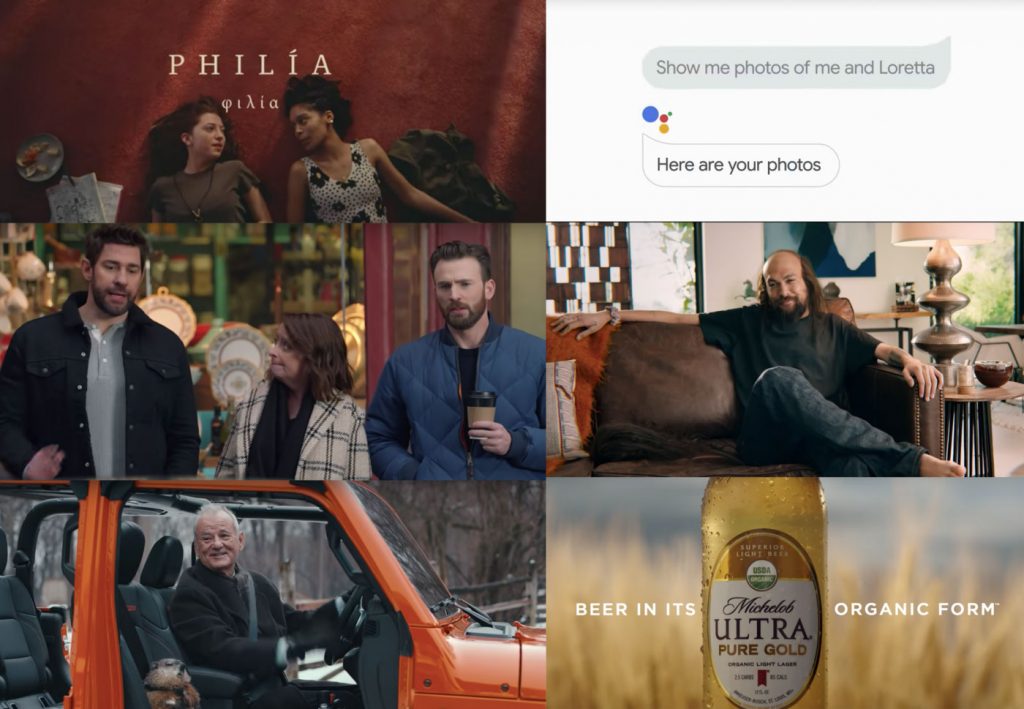The Super Bowl has come and gone — yet I’m still thinking about the ads!
Are you?
While they were totally entertaining, there is a very specific science behind how these ads were made.
I’ll give you a hint — each of the companies that ran Super Bowl ads utilized a massive amount of consumer data to derive their messaging. Data that showed these companies what you like, don’t like, what you care about, and MOST IMPORTANT, what will drive you to make an emotional connection with the product or service they’re selling (the emotional connection must come before the conversion).
Most of these ads will crush their anticipated ROI and were worth every penny of the 7–8 figure buy, but some completely misread you as a consumer.
And I will explain the one ad that was the worst example of this.
But there is more!!!
If you are unable to afford a $5.6 million 30-second Super Bowl spot, I will show how you can steal these big company strategic ad methodologies and model their approach — without having to write that multi-million dollar check.
That’s a win-win.
So which company won my award for the best Super Bowl ad? And who had the worst ad (shockingly, it was one of the largest companies in the world that misfired!)?
Let’s start with the best ad, my favorite honorable mention ads, and a little insight on how you can steal their ideas to create a better ROI to market your product or service.
THE BEST SUPER BOWL AD: New York Life/Love Takes Action
:60 seconds/Cost = $10+ million
https://www.youtube.com/watch?v=-3LTR32dMgI
WHAT WORKED: This ad wins the whole thing — in a world where everyone is glued to their screens, we are subconsciously yearning for more human connection. New York Life went “all-in” on this approach, they went against the grain and authentically appealed to emotional heart strings for what we (customers) want in life — love. Rarely does a big insurance company run an ad that isn’t a “brand-awareness” first approach. New York Life broke the mold. The intent of this ad is to convert new policy holders (and renew current policy holders). I have no doubt it will.
WHAT DIDN’T WORK: Nothing
WHAT YOU CAN LEARN: I’ve read customer/voter data nonstop, on every demographic for 24 years now. Everything in the New York Life ad is confirmed in the data I’ve read for the past three years. Most companies are too scared to be bold and run an ad like this. Trust me though, if more companies ran ads appealing to our emotional need for love and connection, they would crush their competition.
HONORABLE MENTION #1: Hyundai Sonata/Smaht Pahk and HONORABLE MENTION #2: Bill Murray/Jeep Gladiator
:60 seconds/Cost = $10+ million
https://www.youtube.com/watch?v=85iRQdjCzj0
https://www.youtube.com/watch?v=AnhzGUcENWo
WHAT WORKED: The Hyundai Sonata and Jeep Gladiator spots were laugh-out-loud funny. They also used well-known celebrities including Chris Evans, Rachel Dratch, John Krasinski, Red Sox legend David Ortiz (Sonata ad), and Bill Murray (Jeep ad). The Jeep ad took “customer connection” one step deeper by doing a refresh of the movie Groundhog Day (with the same supporting cast too — including “Needle Nose” Ned Ryerson!). These spots have a clearly defined purpose — draw you in with a laugh and educate you on their slick and cool automobile with superior technology.
WHAT DIDN’T WORK: Nothing
WHAT YOU CAN LEARN: Humor + Celebrity/Influencer + Unique but Clear Messaging = Success!
HONORABLE MENTION #3: Organic Michelob Ultra/6 for 6-Pack
:60 seconds/Cost = $10+ million
WHAT WORKED: I’ve written about the health-conscious beer wars before. This one hits the spot by appealing to anyone who buys organic first and also pushing a charitable effort by converting 6 square feet of land to organic for every 6-pack of organic Michelob Ultra Pure Gold sold.
WHAT DIDN’T WORK: Nothing
WHAT YOU CAN LEARN: The customer data is clear — I see it across the board with my clients, as well. If you drink Michelob Ultra, you are watching your weight, and I guarantee that these health-conscious consumers’ purchasing habits overwhelmingly tilt to organic. In addition, to appeal to audiences outside this target market, customers want to buy from companies with a social purpose. Michelob Ultra’s message of “we’ll help farmers become organic if you buy our beer” will attract non-loyal beer drinkers to buy their beer because it just makes them feel good (about sipping their suds).
HONORABLE MENTION #4: Rocket Mortgage/Jason Momoa
:60 seconds/Cost = $10+ million
WHAT WORKED: This hilarious ad is being talked about worldwide for its funny use of one of the most well-known celebrities in the world — Jason Momoa.
WHAT DIDN’T WORK: While I loved the ad, I still don’t know the point of how it relates to using Rocket Mortgage as my primary lender. My guess is that Rocket Mortgage’s outcome was to build brand awareness. But a brand awareness ad that cost $10 million + millions more to produce, feels like it didn’t maximize its potential.
WHAT YOU CAN LEARN: Why are so many Super Bowl ads funny? Because in a digital world that lacks human connection, humor, especially self-deprecating humor, instantly gives you warm feelings. Another way to build an emotional connection with your customer/client base is to use celebrities. If you can’t afford them, use an influencer. If you are rolling your eyes at using an influencer, you are ignorant. The influencer economy is very real. Use it.
Now that we’ve identified the winners, let’s focus on the one company that had the worst ad and got crushed for it!
THE WORST SUPER BOWL AD: Google/Loretta
:90 seconds/Cost = $16.8 million
https://www.youtube.com/watch?v=6xSxXiHwMrg&t=2s
BACKGROUND: Google has a major brand problem right now. You see, Google (Alphabet) is not a search engine company — they are a data company — and one of the most profitable data companies in the world. While everyone uses the software and search engine, Google’s access and use of our data feels like a major infringement. The Google brand has been hurt badly in recent years. There is even talk in congress of breaking the company up (along with other “Big Tech” companies). It’s a major problem, and Google knows it.
What can Google do to turn their negative PR around? Well, their Super Bowl ad tried to take a positive step — but it didn’t work. The “Loretta” ad was aimed at the educated consumer to show them how data can be used to improve their lives. If you didn’t see it, they trotted out (audio and still pictures only) an elderly man using Google’s products to remind himself of great memories he had with his deceased wife. They want to appeal to your emotions with this ad. In principle, it checks the boxes of all the things I preach regarding what you SHOULD be doing with your marketing, but …
WHAT DIDN’T WORK: The Google ad was inauthentic to the narrative in the brains of their target consumers. (Tactically speaking about the ad itself, why not show the husband in front of the camera discussing the memories of his wife? The ad didn’t maximize the human connection. Just a total and colossal miss!)
WHAT THEY SHOULD HAVE DONE: Google was savaged on social media for their inept effort. I’ve dealt with this a thousand times in politics, so it’s clear to me how bungled this ad ended up playing.
My advice?
Well, they could have saved themselves millions in production and ad costs by getting CEO Sundar Pichai to sit on a stool in front of a camera and address the massive audience about how he understands their distrust with Google, how he is committed to fixing this problem ethically. Hell, he should have even proposed a new initiative that will make sure all children’s data is protected. An initiative like this would not have won over the masses, but it would have won over a large swath of the skeptical public (and even some politicians).
WHAT YOU CAN LEARN: Google clearly did their homework with understanding their consumer data. They know they have a problem, so they thought, “Hey, let’s tell a sappy story about how our company helps an elderly widower — that will pull at the emotional heart strings and be a win for our diminished brand!” Google believed they were addressing the problem that the data told them to fix. But they got destroyed for the ad because consumers clearly see how Google is trying to manipulate them. Remember, your emotional connection to consumers must be authentic.
Phillip
P.S. — Talk about somebody with drive, Andrew Evans is constantly pursuing his entrepreneurial spirit and intense sales goals. He’s now working to share what he’s learned with others through his podcast ACE Weekly. When we talked, we covered everything, from the 5 steps you need to take to succeed in marketing, to how you can build relationships needed to convert customers. Listen here.
P.P.S. — In the model of the great Seth Godin, I only write these posts to share ideas and help fellow business owners. It’s a place to learn and grow without fear of being spammed or putting you in a sales funnel. I’m not doing that. If you’re a like-minded individual who might be interested in having these articles sent to you every two weeks, please email me (ps@phillipstutts.com) or sign up below:


